#island of the sea wolves
Text
hey don’t cry. spiro the bald eagle failing at catching a crab, okay?
#guys i’ve literally been thinking about this video for DAYSSS ITS SO FUNNY#if you’re wondering spiro did eventually catch a fish to court his partner misty and they had two chicks! only one survived though it was a#hard summer 💔#island of the sea wolves#chats
131K notes
·
View notes
Text
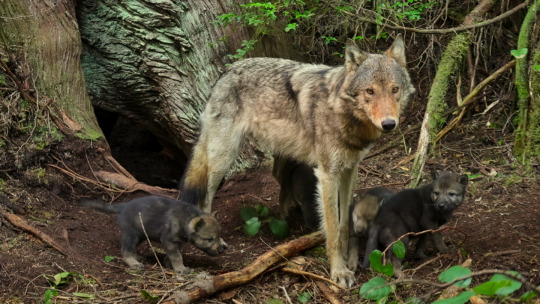
Island of the Sea Wolves
(Photo: Island of the Sea Wolves. Cr. Netflix © 2022)
#island of the sea wolves#netflix#documentary#sea wolves#wolf#animal#mammal#wildlife#nature#canada#canadian geographic
85 notes
·
View notes
Text
I shouldn't watch nature documentaries when I'm this close to my period T_T
#omg the otters 😭#and the injured wolf puppy! 😭#vos no jodas! 😭#Spoiler alert theres a happy ending but they still made me cry! 😭#island of the sea wolves
6 notes
·
View notes
Text
New Series Thoughts!
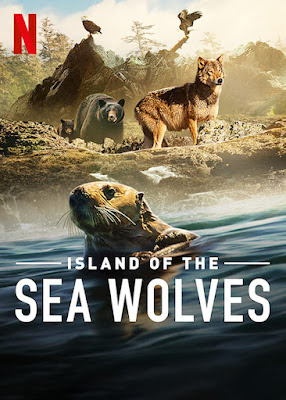
Island of the Sea Wolves (Full series)
Link
0 notes
Text

on sea wolves, october 2022
#anyway the docuseries is on netflix im entranced#my writing#my writing tag#poetry#prose#original prose#original poem#poetry on tumblr#spilled ink#poetryblr#sea wolves#north atlantic#vancouver island
52 notes
·
View notes
Note

Perfect example of a book with "wolf" [Or in this case, "wolves"] in the title that has seemingly nothing to do with wolves.
The actual sea wolves [AKA: Coastal wolves] of British Columbia are really cool!
This book, on the other hand, just looks like a generic spy story.
I bet these guys don't even eat beached seal carcasses, smh.
#i watched a documentary about the coastal/sea wolves of vancouver island they are pretty neat#asks#wolves
2 notes
·
View notes
Text
something sw specific but krigare for sure has done planet earth style holofilms. fight me on it
#im currently watching island of the sea wolves so yeah that might have to something to do with this#but fight me#&. GENERAL#&. verse : star wars
2 notes
·
View notes
Text
i love that otters use tools. fuck yeah
9 notes
·
View notes
Text

Vancouver Island marmots are the most endangered mammal in Canada. The marmots that the series follows are being closely monitored after being released to the wild.
(Photo: Island of the Sea Wolves. Cr. Netflix © 2022)
#island of the sea wolves#netflix#documentary#marmots#vancouver island#mammal#animal#wildlife#nature#canada#canadian geographic
29 notes
·
View notes
Text
part two (tag dump). this isnt everything but at least i tried lol
#wylan & jesper — the sky i see in your eyes.#i like walking the streets free. / v. undetermined.#you leave the blood of your mouth on the streets and feel alive. / v. shelter island.#inej — for tonight‚ let's just watch the sea. / icarusplunged.#keon — as much as you do not want me to see‚ i do. / icarusplunged.#kaz — if you have the stomach for it‚ you may have all of me. / crowgreeds.#persephone — i was a goner when you said you didn’t mind the claw marks. / huntershowl.#rusa — here‚ loop our hands together and grip tight‚ right here. / icarusplunged.#i miss the city. / v. gilded wolves.#this life is you and this crown. / v. royalty.#risk is your second skin. / v. shapeshifter.#this is magic‚ you and me. / v. sorcerer.
0 notes
Text
literally only 2 things in the world can help my anxiety / when i’m generally feeling like a human trashcan. my specifically curated spotify playlist and animal documentaries on netflix
#island of the sea wolves here i come... we're gonna have a wonderful time together so i don't cry <333#clara tais toi
1 note
·
View note
Text
"Many people know about the Yellowstone wolf miracle. After wolves were reintroduced to the national park in the mid-1990s, streamside bushes that had been grazed to stubble by out-of-control elk populations started bouncing back. Streambank erosion decreased. Creatures such as songbirds that favor greenery along creeks returned. Nearby aspens flourished.
While there is debate about how much of this stemmed from the wolves shrinking the elk population and how much was a subtle shift in elk behavior, the overall change was dramatic. People were captivated by the idea that a single charismatic predator’s return could ripple through an entire ecosystem. The result was trumpeted in publications such as National Geographic.
But have you heard about the sea otters and the salt marshes? Probably not.
It turns out these sleek coastal mammals, hunted nearly to extinction for their plush pelts, can play a wolf-like role in rapidly disappearing salt marshes, according to new research. The findings highlight the transformative power of a top predator, and the potential ecosystem benefits from their return.
“It begs the question: In how many other ecosystems worldwide could the reintroduction of a former top predator yield similar benefits?” said Brian Silliman, a Duke University ecologist involved in the research.
The work focused on Elk Slough, a tidal estuary at the edge of California’s Monterey Bay. The salt marsh lining the slough’s banks has been shrinking for decades. Between 1956 and 2003, the area lost 50% of its salt marshes.
Such tidal marshes are critical to keeping shorelines from eroding into the sea, and they are in decline around the world. The damage is often blamed on a combination of human’s altering coastal water flows, rising seas and nutrient pollution that weakens the roots of marsh plants.
But in Elk Slough, a return of sea otters hinted that their earlier disappearance might have been a factor as well. As many as 300,000 sea otters once swam in the coastal waters of western North America, from Baja California north to the Aleutian Islands. But a fur trade begun by Europeans in the 1700s nearly wiped out the animals, reducing their numbers to just a few thousand by the early 1900s. Southern sea otters, which lived on the California coast, were thought to be extinct until a handful were found in the early 1900s.
In the late 1900s, conservation organizations and government agencies embarked on an effort to revive the southern sea otters, which remain protected under the Endangered Species Act. In Monterey Bay, the Monterey Bay Aquarium selected Elk Slough as a prime place to release orphaned young sea otters taken in by the aquarium.
As the otter numbers grew, the dynamics within the salt marsh changed. Between 2008 and 2018, erosion of tidal creeks in the estuary fell by around 70% as otter numbers recovered from just 11 animals to nearly 120 following a population crash tied to an intense El Niño climate cycle.
While suggestive, those results are hardly bulletproof evidence of a link between otters and erosion. Nor does it explain how that might work.
To get a more detailed picture, the researchers visited 5 small tidal creeks feeding into the main slough. At each one, they enclosed some of the marsh with fencing to keep out otters, while other spots were left open. Over three years, they monitored the diverging fates of the different patches.
The results showed that otter presence made a dramatic difference in the condition of the marsh. They also helped illuminate why this was happening. It comes down to the otters’ appetite for small burrowing crabs that live in the marsh.
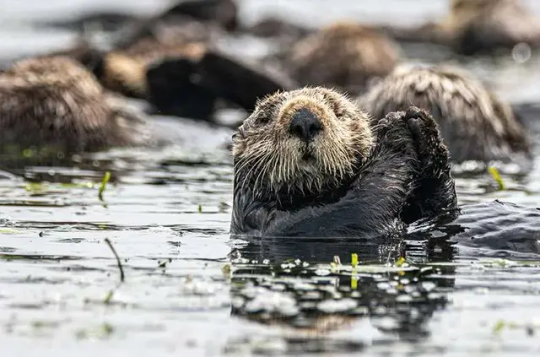
Adult otters need to eat around 25% of their body weight every day to endure the cold Pacific Ocean waters, the equivalent of 20 to 25 pounds. And crabs are one of their favorite meals. After three years, crab densities were 68% higher in fenced areas beyond the reach of otters. The number of crab burrows was also higher. At the same time, marsh grasses inside the fences fared worse, with 48% less mass of leaves and stems and 15% less root mass, a critical feature for capturing sediment that could otherwise wash away, the scientists reported in late January in Nature.
The results point to the crabs as a culprit in the decline of the marshes, as they excavate their holes and feed on the plant roots. It also shows the returning otters’ potential as a marsh savior, even in the face of rising sea levels and continued pollution. In tidal creeks with high numbers of otters, creek erosion was just 5 centimeters per year, 69% lower than in creeks with fewer otters and a far cry from earlier erosion of as much as 30 centimeters per year.
“The return of the sea otters didn’t reverse the losses, but it did slow them to a point that these systems could restabilize despite all the other pressures they are subject to,” said Brent Hughes, a biology professor at Sonoma State University and former postdoctoral researcher in Silliman’s Duke lab.
The findings raise the question of whether other coastal ecosystems might benefit from a return of top predators. The scientists note that a number of these places were once filled with such toothy creatures as bears, crocodiles, sharks, wolves, lions and dolphins. Sea otters are still largely absent along much of the West Coast.
As people wrestle to hold back the seas and revive their ailing coasts, a predator revival could offer relatively cheap and effective assistance. “It would cost millions of dollars for humans to rebuild these creek banks and restore these marshes,” Silliman said of Elk Slough. “The sea otters are stabilizing them for free in exchange for an all-you-can-eat crab feast.”"
-via Anthropocene Magazine, February 7, 2024
#otters#sea otters#conservation#erosion#coastal erosion#coastline#marshes#saltwater#marine science#marine biology#marine animals#sea creatures#ocean#sustainability#soil erosion#erosion control#crab#good news#hope
3K notes
·
View notes
Text
So, I’ve rediscovered my love for documentaries recently. I don’t have such channels of tv, so I didn’t watch any for a long time, but I watched them while reading on the plane (because I can’t hear anything anyway, so just watched the images) and on my parents’ tv with 100 channels and netflix. With recent technology the cinematography is really breathtaking, but the narration grates on my nerves. I want to learn about animals and not listen to a soap opera with anthropomorphized animals 😬 It’s really going into cheap entertainment instead of informative. And don’t even get me started about unscientific ones, like the fungi “documentary“ with amazing time lapse videos of fungi, but questionable pseudo science theories about human intelligence being triggered by monkeys or protohumans consuming dead meat with fungi in it 🙄
#seems like it's a rant day 😅#documentary#this was triggered by the island of the sea wolves#beautiful but without narration#and the last part was fantastic fungi#there was something cult-like about that#and mushroom-induced drug fantasies...#never got an answer why the same meat didn't trigger other animals...
1 note
·
View note
Text



Travel back [...] a few hundred years to before the industrial revolution, and the wildlife of Britain and Ireland looks very different indeed.
Take orcas: while there are now less than ten left in Britain’s only permanent (and non-breeding) resident population, around 250 years ago the English [...] naturalist John Wallis gave this extraordinary account of a mass stranding of orcas on the north Northumberland coast [...]. If this record is reliable, then more orcas were stranded on this beach south of the Farne Islands on one day in 1734 than are probably ever present in British and Irish waters today. [...]
Other careful naturalists from this period observed orcas around the coasts of Cornwall, Norfolk and Suffolk. I have spent the last five years tracking down more than 10,000 records of wildlife recorded between 1529 and 1772 by naturalists, travellers, historians and antiquarians throughout Britain and Ireland, in order to reevaluate the prevalence and habits of more than 150 species [...].
In the early modern period, wolves, beavers and probably some lynxes still survived in regions of Scotland and Ireland. By this point, wolves in particular seem to have become re-imagined as monsters [...].
Elsewhere in Scotland, the now globally extinct great auk could still be found on islands in the Outer Hebrides. Looking a bit like a penguin but most closely related to the razorbill, the great auk’s vulnerability is highlighted by writer Martin Martin while mapping St Kilda in 1697 [...].
[A]nd pine martens and “Scottish” wildcats were also found in England and Wales. Fishers caught burbot and sturgeon in both rivers and at sea, [...] as well as now-scarce fishes such as the angelshark, halibut and common skate. Threatened molluscs like the freshwater pearl mussel and oyster were also far more widespread. [...]
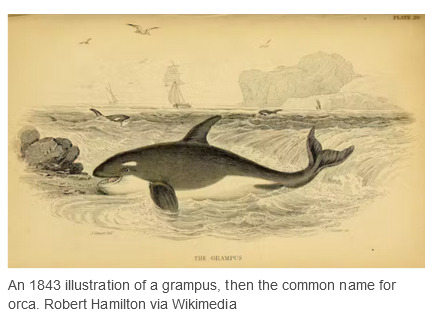
Predators such as wolves that interfered with human happiness were ruthlessly hunted. Authors such as Robert Sibbald, in his natural history of Scotland (1684), are aware and indeed pleased that several species of wolf have gone extinct:
There must be a divine kindness directed towards our homeland, because most of our animals have a use for human life. We also lack those wild and savage ones of other regions. Wolves were common once upon a time, and even bears are spoken of among the Scottish, but time extinguished the genera and they are extirpated from the island.
The wolf was of no use for food and medicine and did no service for humans, so its extinction could be celebrated as an achievement towards the creation of a more civilised world. Around 30 natural history sources written between the 16th and 18th centuries remark on the absence of the wolf from England, Wales and much of Scotland. [...]

In Pococke’s 1760 Tour of Scotland, he describes being told about a wild species of cat – which seems, incredibly, to be a lynx – still living in the old county of Kirkcudbrightshire in the south-west of Scotland. Much of Pococke’s description of this cat is tied up with its persecution, apparently including an extra cost that the fox-hunter charges for killing lynxes:
They have also a wild cat three times as big as the common cat. [...] It is said they will attack a man who would attempt to take their young one [...]. The country pays about £20 a year to a person who is obliged to come and destroy the foxes when they send to him. [...]
The capercaillie is another example of a species whose decline was correctly recognised by early modern writers. Today, this large turkey-like bird [...] is found only rarely in the north of Scotland, but 250–500 years ago it was recorded in the west of Ireland as well as a swathe of Scotland north of the central belt. [...] Charles Smith, the prolific Dublin-based author who had theorised about the decline of herring on the coast of County Down, also recorded the capercaillie in County Cork in the south of Ireland, but noted: This bird is not found in England and now rarely in Ireland, since our woods have been destroyed. [...] Despite being protected by law in Scotland from 1621 and in Ireland 90 years later, the capercaillie went extinct in both countries in the 18th century [...].
---
Images, captions, and text by: Lee Raye. “Wildlife wonders of Britain and Ireland before the industrial revolution – my research reveals all the biodiversity we’ve lost.” The Conversation. 17 July 2023. [Map by Lee Raye. Bold emphasis and some paragraph breaks/contractions added by me.]
1K notes
·
View notes
Text
so i was watching Fit's stream and he was cleaning up a Federation outpost.... what's up with the outpost names huh? long post warning TL;DR at bottom.
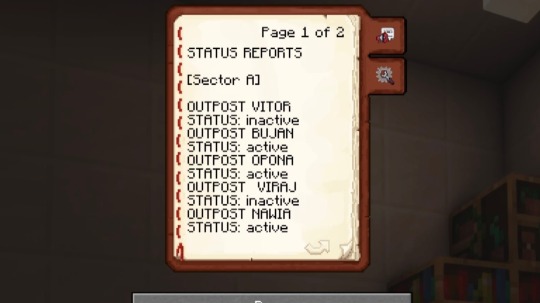
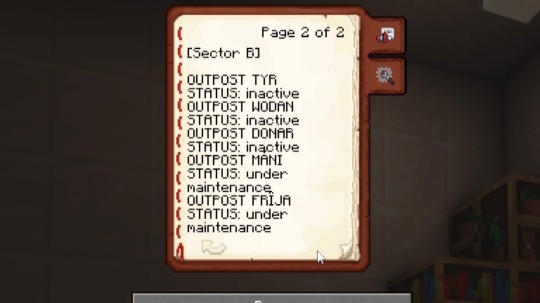
Sector A's outpost names are derived from Slavic mythology; specifically special places from the myths.
after searching these names online i found this website: https://meettheslavs.com/slavic-mythological-places/
taking from the website;
1. there's a "mystical mountain of Vitor" that's "built in heaven" and "hard to find because it changes its location as soon as the wind blows in a different direction". it's also said to have dragons living on it (this is the one Fit was sent to for repairs, and it also had weird blue draconic-looking creatures around it. it was also an icy mountain...)
2. there's a "Buyan/Bujan Island", described to "appear and disappear with the tides" and be the "dwelling place of three brothers, the Northern, Western and Eastern winds".
3. there's a "Kingdom of Opona", an "imaginary place [that] existed at the edge of the Earth which [ancient Russians] imagined as a flat plane." it was believed "free and happy [peasants]" lived in this country under a "true and just" ruler.
4. there's a "Vyraj/Viraj", a "resting place for the souls and spirits" AKA the equivalent of Heaven in Slavic mythology. it's "a place where birds find their retreat in the winter". (notably this outpost is inactive)
5. lastly there's a "Nav/Nawia", a "mysterious place for the souls of the dead", and "often interpreted as another version of the imaginary place Vyraj", so AKA Hell or the Underworld. (the Hell outpost is active but not the Heaven outpost???)
If Outpost Vitor sort of matches the description from the myth, maybe the other outposts do too? so like Bujan is on an island in the sea, Opona is super far out in a village maybe, Viraj and Nawia i have no clue...
Sector B's outpost names are derived from Norse mythology; specifically Norse gods. being a nerd i noticed this instantly which was what tipped me off to search up Sector A's names.
taking from various sources, but mostly from their Wikipedia articles:
1. "Tyr" is an one-armed god representing justice and fair treaties despite being a god of war, who lost his arm in the process of binding Fenrir the wolf. he dies in Ragnarök.
2. "Odin/Woden/Wodan" is the ruler of Asgard, the All-Father, and the one-eyed god of wisdom war, and death. he presided over Valhalla, a sacred hall that housed dead warriors in preparation for Ragnarok. he dies in Ragnarök.
3. "Thor/Donar" is probably the most popular Norse god, the god of thunder. the embodiment of strength, he is the protector of the Æsir and the humans. he dies in Ragnarök.
4. "Máni" is the god of the Moon and brother of Sol, the goddess of the Sun. they is eternally chased by Skoll and Hati, two wolves who seek to plunge the world into chaos by eating the Sun and Moon. he dies in Ragnarök.
5. Outpost Frïja I believe is "Frigg", the Queen of Asgard and the goddess of marriage, family and motherhood. she lives in Ragnarök.
notably, all five gods (and goddess) lend their names to days of the week (Máni -> Monday, Tyr -> Tuesday, Woden -> Wednesday, Thor -> Thursday, and Frigg -> Friday). none of these outposts are active, they are all inactive or under maintenance, so i'm inclined to believe these aren't as important right now as compared to Sector A...
still, these outposts are named after Slavic and Norse myths for a reason possibly so these might be significant. Nothing particularly comes to mind but if anyone has any idea feel free to add on...
TL;DR: Federation Outpost names from Fit's stream have Slavic/Norse mythology inspired names, possible significance?
255 notes
·
View notes